Warm and cold colors in the interior
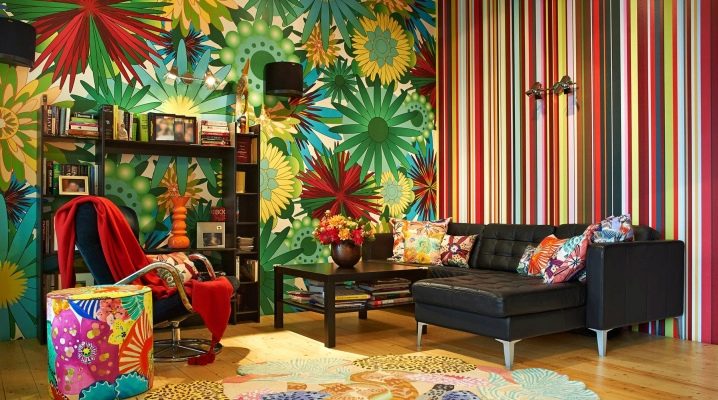
The perception of color in interior design is a subjective concept. The same shade can cause a positive emotional outburst in some, while in others it can cause rejection. It depends on personal taste or cultural background.
Color has a strong effect on a person: it is necessary to slightly change the tone, and the perception of the environment already changes. In addition to a personal attitude, the choice of colors can be influenced by the prevailing cultural mentality: one and the same tone for one people is full of positive, and for another, it personifies negative.
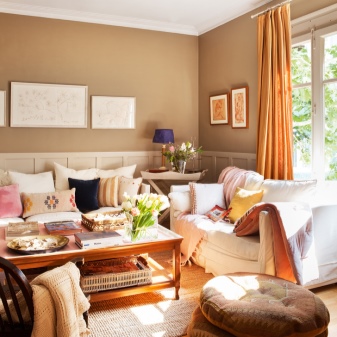
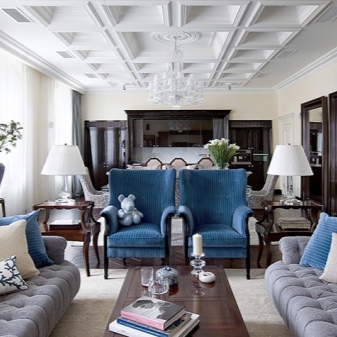
Color tables
The influence of color on a person is studied by artists, designers, psychologists, doctors. To systematize the accumulated knowledge, special tables and diagrams are drawn up. They conventionally divide colors into cold and warm, basic and composite, chromatic and achromatic. The combination of shades with each other and the influence of each of them on our perception of reality are taken into account.
And since a person has to constantly be in the atmosphere of apartments, houses, offices with diverse colors, he is exposed to their influence, without even knowing about it.
Color tables are needed for mixing paints, for the correct combination of shades used in interiors. The tables show the tones that our eye perceives, they are divided according to the following criteria.
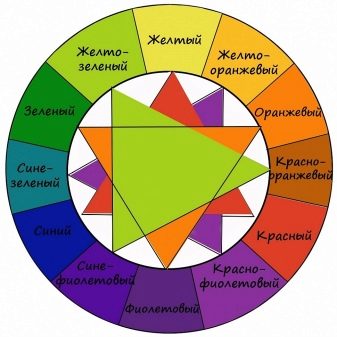
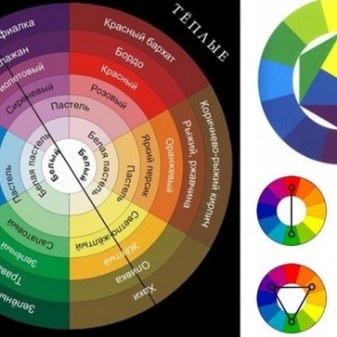
Chromatic
All shades of the solar spectrum (rainbows). They consist of three colors and are considered the main ones - these are red, yellow and blue. If they are mixed with each other, secondary colors are formed.
Green is obtained by merging primary yellow and primary blue. Red, integrating into yellow, forms orange. Blue combined with red turns purple.
When mixing primary and secondary shades, tertiary tones are obtained.
These include blue-green, red-violet, etc. If you mix the shades that are opposite each other in the table, they begin to act as neutralizers and turn into gray.
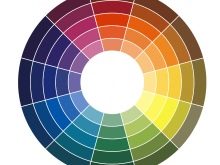
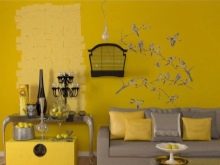
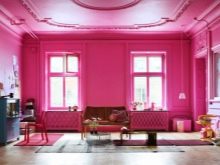
Achromatic
This group includes black, white and gray, with all its many shades. Black absorbs the entire spectrum of light, while white reflects it. Achromatic colors are often chosen for urban interior styles.

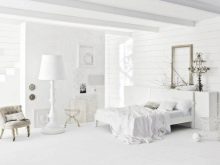
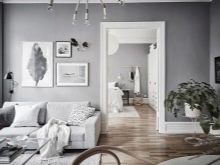
Warm and cold colors in the interior
In the color table, two more large groups of shades are distinguished - cold and warm. They should be taken into account when creating interiors, as they carry a different emotional load.
Warm
Warm tones include reds, oranges, and yellows, and all the shades they produce. These are the colors of fire and sun and they carry the same hot energy, passion, stimulating and prompting for action. These colors are poorly suited to rooms where peace and relaxation are needed, such as bedrooms and bathrooms.
Orange is not primary, but it sits between the primary colors red and yellow. This suggests that warm tones are combined with each other without the participation of cold shades.
Warm shades are used in dark rooms with north-facing windows, as they create the illusion of light and warmth. Taking into account the emotional component, they should be used in common rooms: kitchen, dining room, living room. Vigorous colors have a positive effect on communication and whet the appetite. Warm tones make the interior more comfortable, they add optimism. But too poisonous shades are considered aggressive.
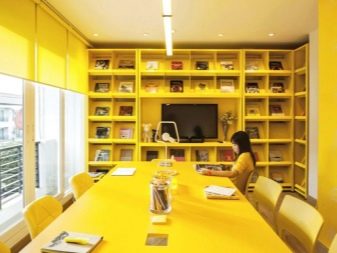


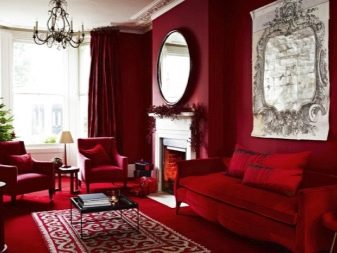
Cold
The cold spectrum includes green, blue and violet. These are natural tones that echo the shades of vegetation and water. They look more muted, restrained than warm ones. By their influence, they are able to calm and relax. It is this palette that is chosen for the bedroom or nursery in which a hyperactive child lives.
Blue is the only primary cold color, it can produce all shades of this group only by mixing with warm tones.
Blue, when combined with yellow, produces green. And if you mix it with red, you get purple. All this is a cold spectrum, but at the same time, each of them carries a fraction of warm shades (green - yellow, violet - red).
The cold color calms the nervous system, relieves stress conditions, puts everything “on the shelves” in our head. Therefore, it is good to work in an office with cold shades, obeying common sense and rationalism. In the bedroom with cold tones, he sleeps soundly.
This spectrum works well in rooms with an abundance of light and windows to the south. The color blue cannot be used in the dining room or kitchen: it reduces appetite, but those who want to lose weight should pay attention to it.

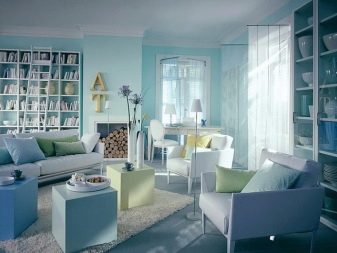
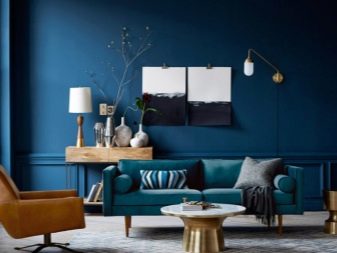

The color of the interior in the perception of a person
Monochrome interiors look harmoniously, faithful to one color, but actively using all its manifestations.
Designers skillfully use the "play" of contrasts, take into account the degree of expressiveness of shades.
They develop color combinations using Itten's color wheel theory, which gives the best color combinations.
Contrasts of light and dark, as well as cold and warm, look great in the interior.
Besides, monochromatic environments with bright accent spots are created... If it is a cold interior, it is warmed up with several items of red or yellow color. The energy of the warm, on the contrary, is extinguished with accents of the cold spectrum.
Consider the effect of color on a person and the use of specific shades in the interior.

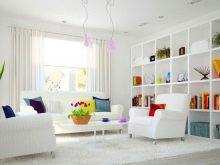
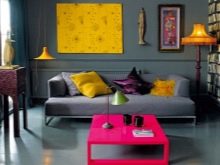
Red
An active hot color, associated with fire and blood, but at the same time with love and passion. It is able to affect people at the physiological level, increasing the pressure and pulse rate. Some people believe that the metabolic processes in people living in red rooms are faster. Different peoples perceive red in their own way: for the Chinese it is the color of happiness and prosperity, and for the people of South Africa it is sorrow.
Examples of interiors
- Scarlet in contrast to black looks extremely impressive. But the delight is enough for the first half hour of staying in the room. There comes a time when the abundance of red walls starts to annoy.
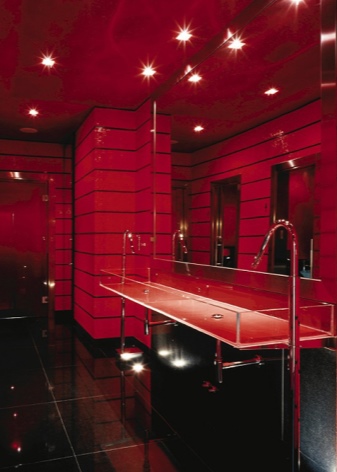
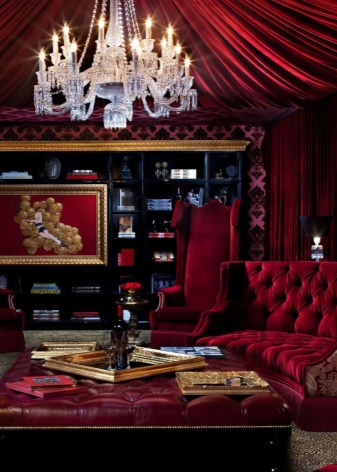
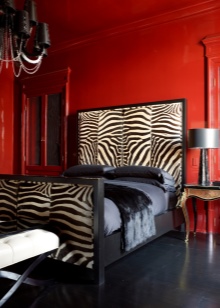
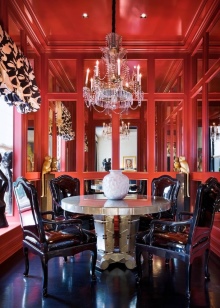

- Red, dosed into the white interior, "warms up" the neutral atmosphere with accent spots.
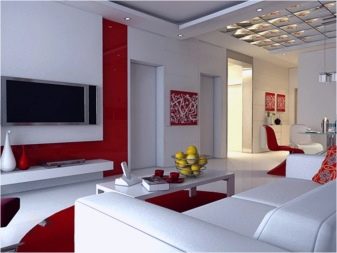
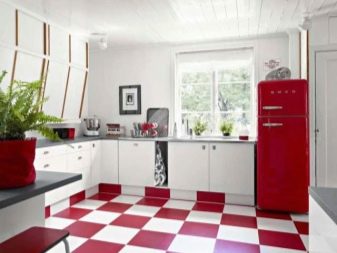
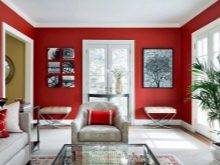


Orange
Unlike red, orange is not irritating. By combining the energy of the flame and the good nature of the yellow hue, it can be comfortable, warm and sociable. Orange stimulates the brain. It can be applied in the study, kitchen, dining room. More often it is used in the form of accent items.
Example in the interior
Orange with bright accents refreshes the gray monochrome interior of the teenage room.
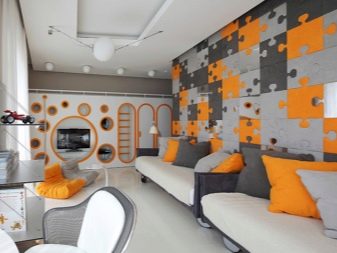
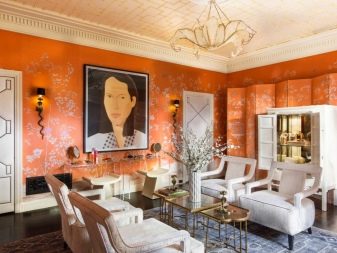
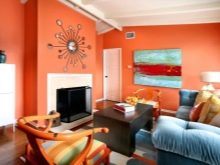
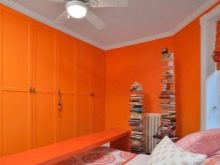

Yellow
A warm sunny color is considered the most intense; it makes a cold dark room light and warm. Delicate shades of yellow can be used in the nursery, unlike blue and pink, it is good for babies of any gender. Yellow color gives a feeling of happiness and allows you to look at the world through the eyes of an optimist.
Interior example
In the setting of a sunny children's room, the most active colors of the warm spectrum are used - yellow, red, orange.
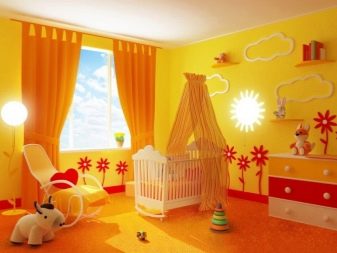
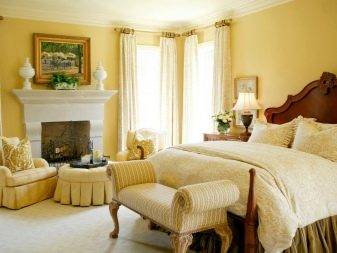
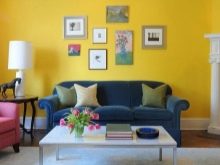
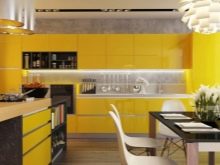
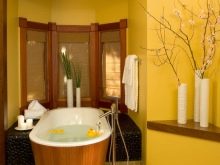
Blue
A calm, cold shade, for some it causes sadness, but at the same time, it is the color of responsibility. In deep blue tones, the room feels solid and stable. Delicate shades of blue look pleasant and confidential.
Interior example
Blue is able to reflect power and tenderness in design at the same time.
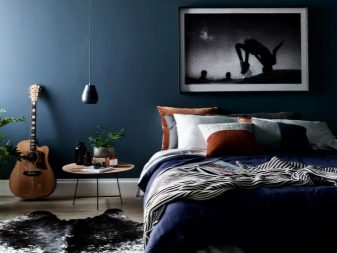
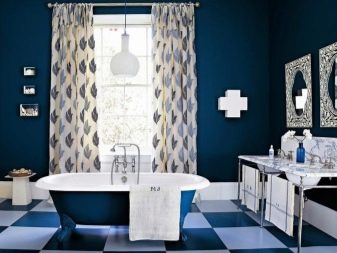


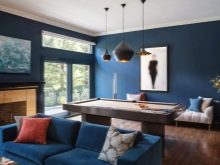
Green
Green is a loyal color for all rooms and can be used anywhere. From a medical point of view, contemplating green shades, our gaze rests. But at the same time, the tone is ambiguous: absorbing the energy of yellow and the calmness of blue, he tries to balance between action and peace.
Examples in the interior
- olive shades of green are conducive to natural contemplation;
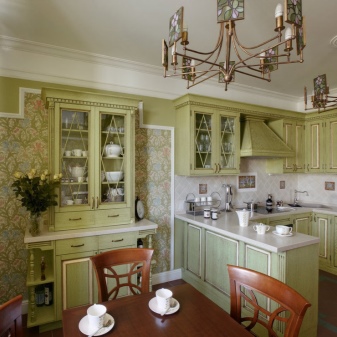
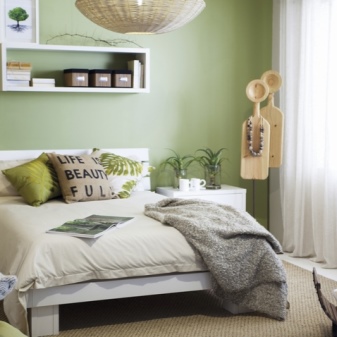



- the intense green color carries the energy of spring and the awakening of nature.
Having learned to combine colors and understand their influence on the emotional state of a person, you can create an ideal interior in which you constantly want to be.
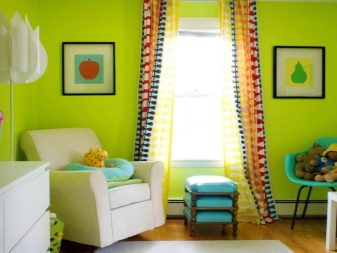
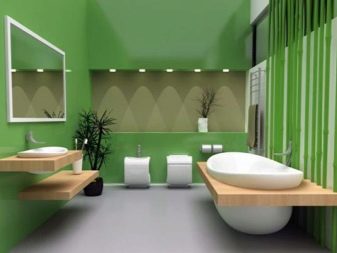
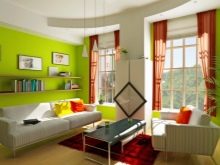
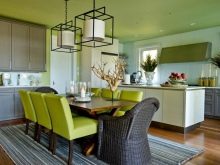
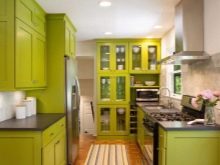













The comment was sent successfully.